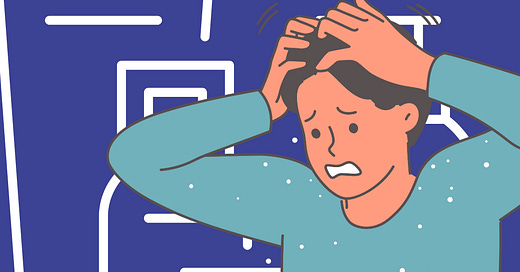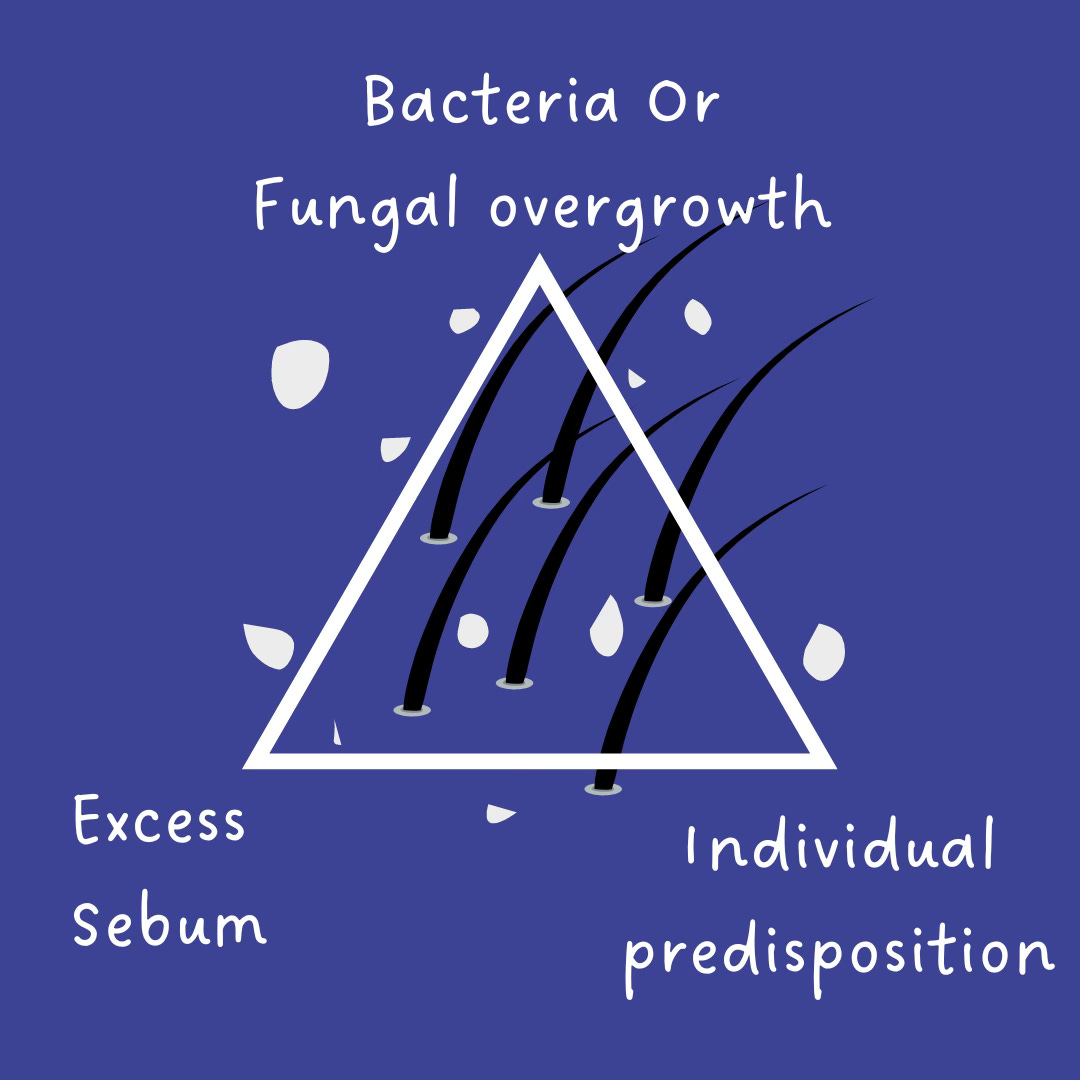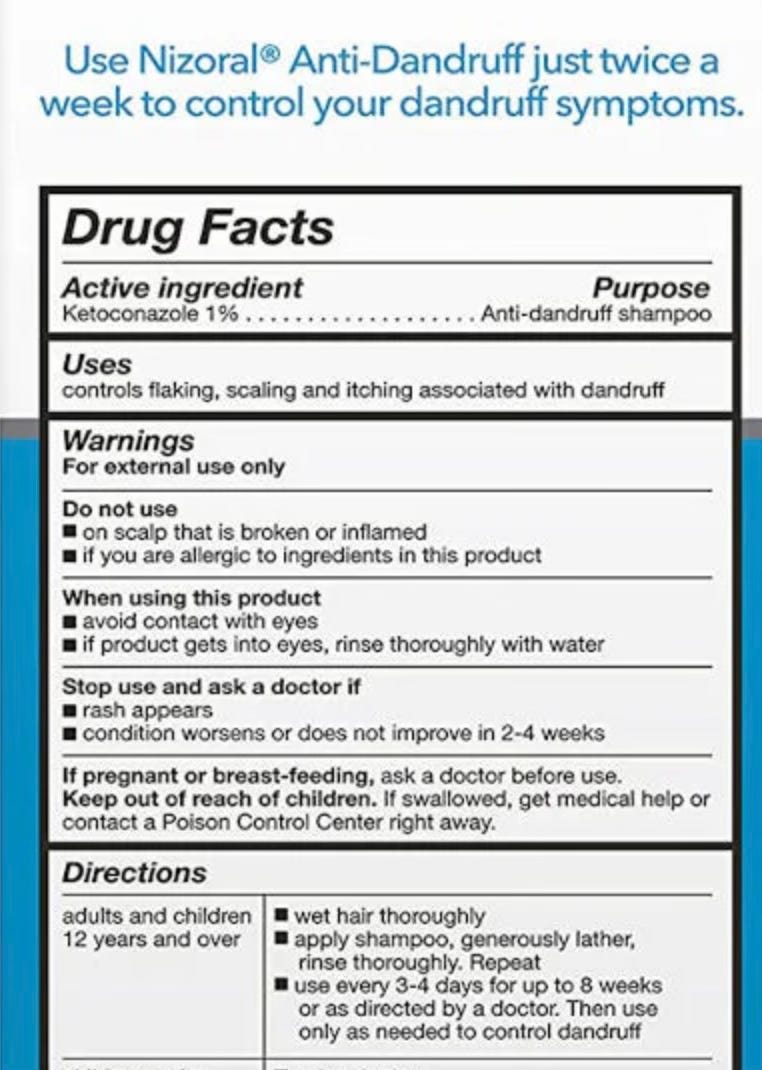Okay, I don’t know if it is the most exploited condition, but I do know it is exploited heavily. Think about the supermarket's haircare shelves: an entire section is dedicated to anti-dandruff shampoos.
According to this paper, in the USA alone, men and women spend nearly 300 million dollars annually on anti-dandruff care.
Nevertheless, the public needs all those shampoos. Did you know that almost 50% of the world’s population suffers from Dandruff?
I have dandruff and have tried so many different products. I'm lucky my hair is still intact.
The reason why I felt the need to experiment on my scalp was because nothing seemed to work! It led to acne on my forehead because the small flakes would block my skin pores.
I think I have finally found a solution, but more about that later.
Why you should read ahead:
In this article, we are going to learn about
The cellular anatomy of dandruff.
The causes (or causes) of dandruff.
Treatment options available, and how each one works.
The basics... What is dandruff anyway?
Dandruff is the stubborn white flaky material that increases the more you try to brush it away. It seems as though the scalp produces the white flakes the more you rub it!
Apart from the cosmetic appearance, the itching causes a lot of problems. It also leads to acne. What makes matters worse is that dandruff is one of the hardest conditions to treat.
Our scalp is essentially skin, except over the skull. It has the same “layers” such as the epidermis and dermis, like the layers of skin elsewhere.
The epidermis is the outermost layer of the skin. There are multiple cell types in the epidermis all arranged layer by layer, with each cell performing a slightly different function. A diagrammatic representation would look something like this:
Do you see the cells right at the top in the Stratum Corneum? Those cells shed, and they’re supposed to. The epidermis cells replace and regenerate every so often, keeping our skin and scalp fresh and healthy.
This shedding is the basis for the problem of dandruff. Somehow, for a reason we don’t quite understand, this shedding increases. The cells become larger, clumped together, and more in number leading to what we call scales. The scaling forms those white flakes we see, A.K.A dandruff.
It’s important to know that at the cellular level, we don’t quite understand what is going on. That’s one of the reasons why treatment is tricky. By this I mean we don’t understand what is causing the excessive flaking.
The Role of Microbes
So, now we know that dandruff is a collection of a type of skin cell. Can fungi or bacteria be involved?
It was as early as 1860 that a section of yeast called Malassezia was widely accepted as the main cause of dandruff. Malassezia commonly causes skin infections that lead to scaling, itching, and redness.
Since we thought this group of organisms causes dandruff, the anti-fungal medications used to treat skin infections should work on the scalp.
Note that yeast is a type of fungus.
That’s why you will find many medicated shampoos with names such as Ketoconazole, which are well-known antifungals and are used to treat dandruff.
The funny thing is, we don’t even know for sure that this yeast causes dandruff!
In the experiments conducted way back in the 1840s, they studied the white flakes associated with dandruff and saw a yeast cell which was later identified as Malasezzia.
However, since then, many have realised that the association of the yeast cells with dandruff could either be:
1. Causative: The yeast infects our scalp which leads to excessive flaking
2. Opportunistic: Our scalp flakes excessively, and the yeast takes advantage of that and grows more. They, however, do not cause the flaking.
We now know that our scalp acts as a host for many organisms, such as the bacteria Propionibacterium or Staphylococci, and fungi like Malassezia. Our scalp has lots of yummy sebum and is a nice warm environment for the organisms to grow. This threesome usually has a good time.
We have observed that the number of Malassezia cells increases by 1.5 to 2 times (from a base level of 10^3 per mm^2). However, just because one can isolate a huge number of a type of organism from the scalp doesn’t mean it causes dandruff.
Questions were raised about Malassezia being a direct cause when we observed the response of dandruff to treatment. It notoriously bounces back the moment treatment with a medicated shampoo is withdrawn.
Moreover, steroid treatment has been effective. This is strange because steroid treatment allows more fungal growth.
Steroids are useful in situations where we want to decrease inflammation and cell turnover. As a side effect, they tend to decrease immunity as they act against our fighter immune cells. In this situation, fungal infections take over and proliferate to a dangerous extent because there are no fighter cells to stop them!
So, if the yeast cells Malassezia (a type of fungus) caused dandruff, shouldn’t the dandruff worsen with steroid treatment? However, steroids are used as treatment in very severe cases of dandruff!
In addition, some individuals seem to have more dandruff when they are stressed. Others have a tendency to produce more scalp sebum which makes them susceptible to dandruff.
The research into the cause is still ongoing. Which is why I get a little annoyed with shampoos that claim to cure dandruff just because it has a little anti-fungal in it. We don’t know the cause, there are multiple factors, and fungi are not the main cause!
So, the cause of dandruff is…
A combination of factors.
Increased scaling, lots of Malassezia or bacteria, and environmental factors come together in a person who has dandruff. Do you see how the cause of dandruff may be slightly different for each individual? This explains why a type of shampoo may work for some but not for others.
Dandruff may also be caused by excessive drying of the scalp. Some individuals may be predisposed to this, while others might be washing their hair too often or with harsh hair-care products. In this case, the protection barrier above the Stratum Corneum is lost, leading to itching, flaking, and dandruff.
A Common Misconception
Dandruff isn’t dirty.
If you notice someone has a lot of dandruff in their hair, the immediate thought is – I don’t think that person washes their hair very often.
That isn’t necessarily true! In fact, like we noted above, if a person washes their hair too often they may dry their scalp out and get severe scaling from it!
The Ideal Treatment
First off, there isn’t an ideal treatment option. Just like we learnt above, not only is dandruff multifactorial, but also it differs from one person to another which makes the treatment very tricky.
Below is a collection of all the treatment modalities available. Hopefully, you will find something that works for you!
Antifungals
These medicated shampoos or ointments work by inhibiting the Malassezia growth. It’s really difficult to kill this organism once it settles in. The best we can do is to prevent the cells from proliferating by messing with their cell membranes!
That is why anti-fungal shampoos need to be applied for a short initiation course, followed by a maintenance course.
For example, in the image above, we can see that the recommendation is to start by using it every 3-4 days for 8 weeks followed by twice a week as maintenance or as needed.
Some common shampoos are:
Ketoconazole based (Nizoral)
Piroctone olamine (Alpecin)
Zinc Pyrithione (Present in products like ScalpE which is a combination of ketoconazole and zinc pyrithione).
Topical Steroids
I would use this only if a doctor recommends it, as steroid therapy can have many side effects and it needs to be monitored closely.
Coal Tar
This is a shampoo that needs to be applied 1-2 times per week. Apparently, it works against fungi and decreases sebum production however the evidence of its efficacy is sparse! A common coal tar preparation available on the market is “Neutrogena T-gel”. I could not find any evidence to support their claims which they have listed on their website (In a very dry manner, might I add):
Systemic Treatment
In extremely severe conditions, doctors may prescribe antifungal tablets, steroid treatment, or immunotherapies that the patient would have to swallow and allow it to enter the bloodstream.
As you can imagine, such treatments will have side effects!
What worked for me
In the next article, I’ll delve into my personal story of what worked and what didn’t! You’re welcome to share your story with me as a reply or direct message! With your permission, I’d love to share it with others :D
Share your story here:
As always,
Happy Reading :)









Insightful article! Can you help with what things we need to check and avoid in commercial shampoos available in stores from their ingredient lists?